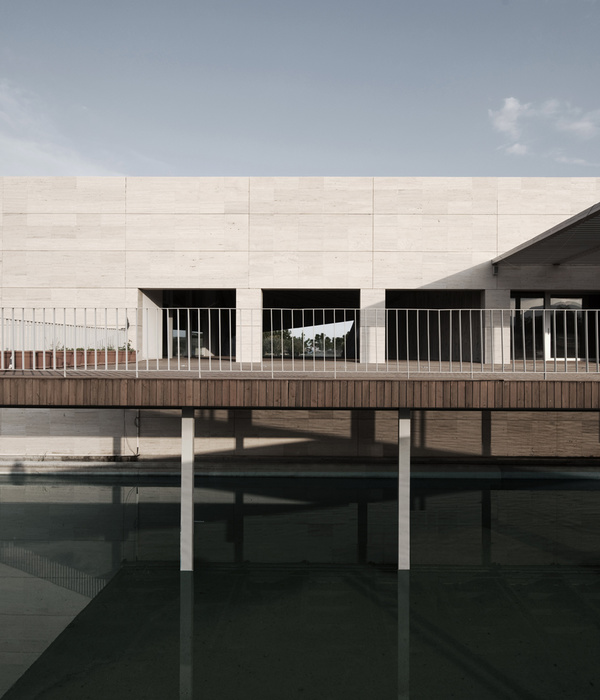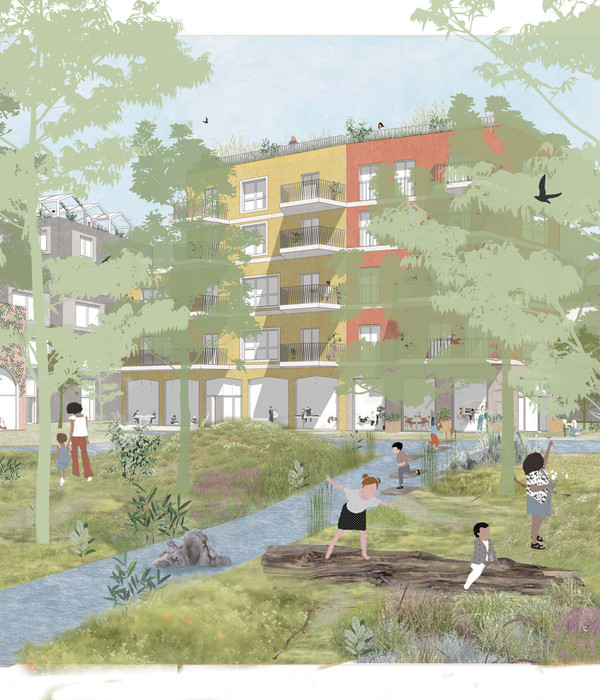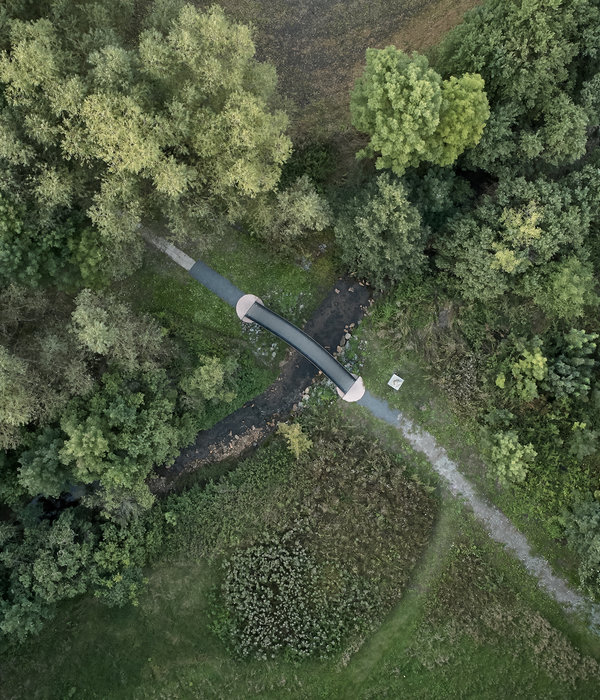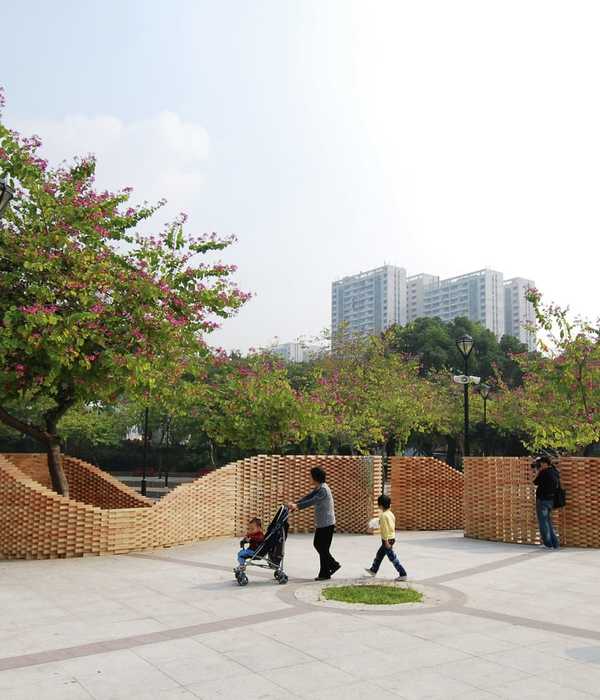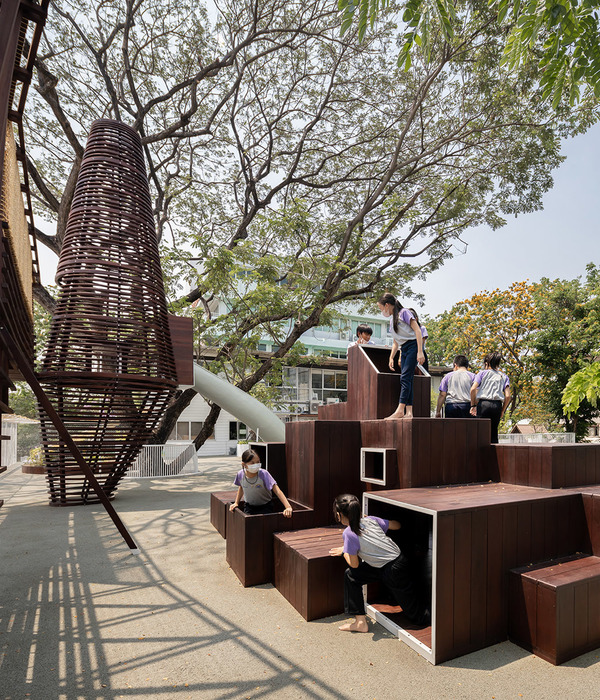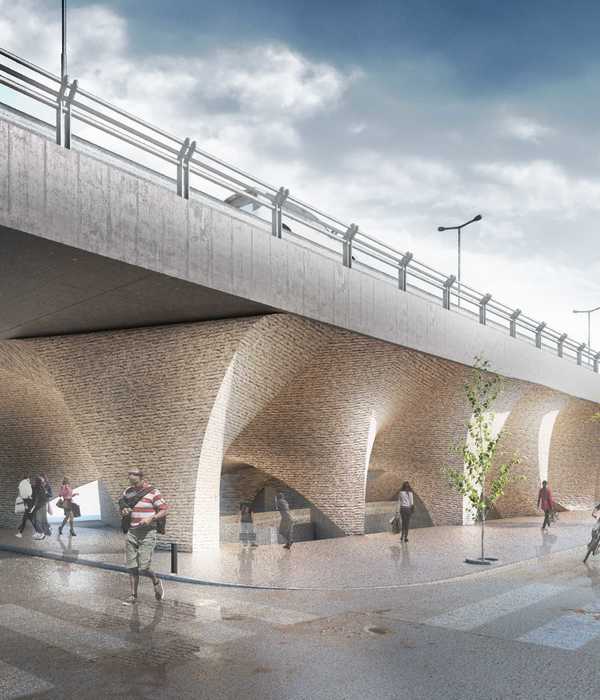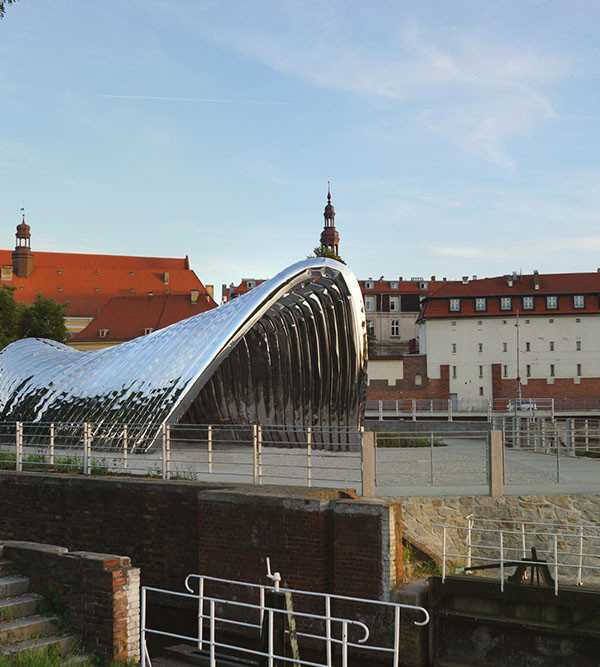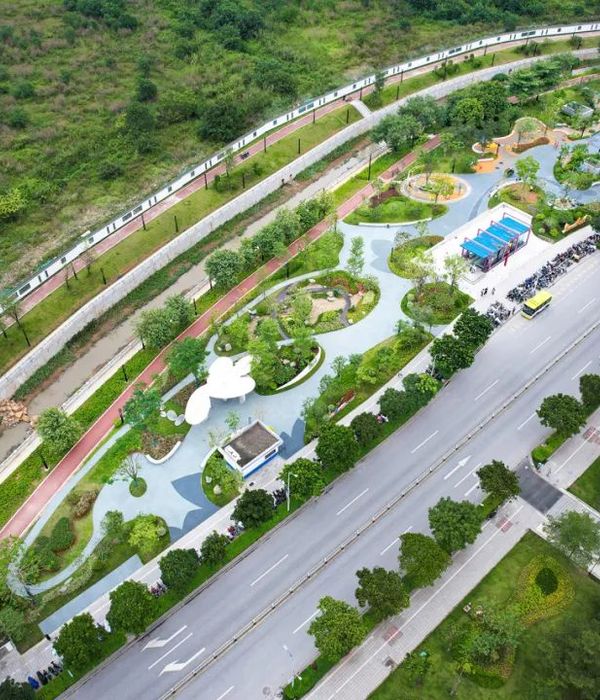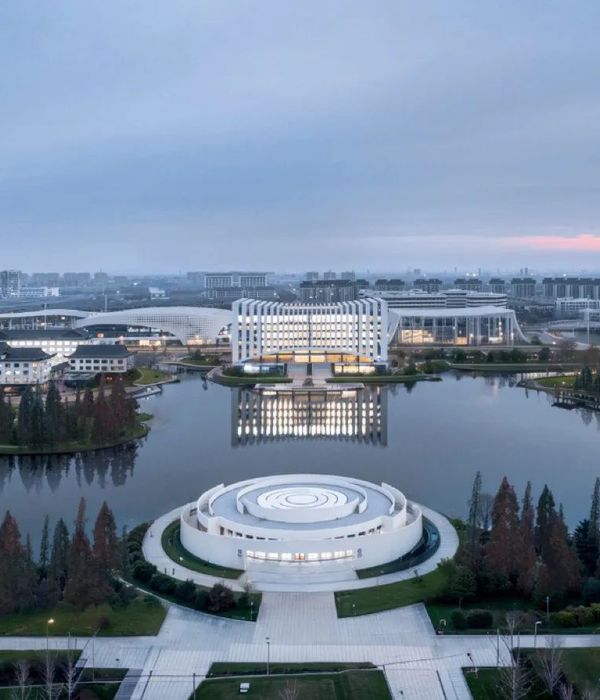- 项目名称:景观孔洞——Amatengo的人工水源及社会基础设施
- 项目年份:2018年
- 项目地点:墨西哥 Oaxaca地区 San Agustin Amatengo
- 景观面积:650万平方米
- 设计师:Varat Limwibul,Elisa Silva建议指导
- 设计图纸:Varat Limwibul
Varat Limwibul:“Landscape Voids”是一个以墨西哥瓦哈卡地区龙舌兰蒸馏酒产业的景观需求为核心媒介,来提升当地的经济、文化精神以及社会公平,并为当地贫困、缺水和环境退化问题,提供多个解决机会的自下而上全方位规划策略。在项目中,为制作一种具有可行性的规划策略,扭转当地缺水趋势,提高农业生产率,我们在开展景观实地工作时,与当地社区密切合作,并从他们对土地的了解中受益良多;为了与其包容性公共空间和指定重新造林区域的定义相结合,我们创建了一种经济实惠、可负担的集水战略来帮助获取水资源,所以,当地坡面、风向、近水点以及Mezcal生产过程的分析将是推动此次规划策略的核心。该项目还试图通过规划布局其教育性公共空间,来突出文化和生产性景观,提高人民意识,增强场地民族特色,并最终为其新经济型社会基础设施奠定基础,以逐步增强当地生活与水和土地之间的灵活关系。
Varat Limwibul:Landscape Voids is the bottom-up planning strategy to open several opportunities to deal with poverty, water scarcity and environmental degradation in Oaxaca region, Mexico. The project considers the landscape requirement of Mezcal (agave distilled-alcoholic beverage) as a core medium to improve local economy, cultural spirit and social equity. Working on landscape fieldwork closely with the community and benefiting from their knowledge of the land is the goal to uncover feasible strategies to reverse water scarcity trends and increase agricultural productivity. Water accessibility through the implementation of affordable water harvesting strategies is designed to integrate with inclusive public space and the definition of specific areas for reforestation. The analysis of slope, wind direction, proximity to water and Mezcal production process will be the core to drive the planning strategy. By planning didactic public space interventions, Landscape Voids attempts to foreground both cultural and productive landscapes that improve awareness and complement the site´s ethnic identity. Ultimately, Landscape Voids will ground new affordable social infrastructure which could be incrementally enhance the flexible relationship of life, water and land.
▼项目平面图 Master Plan
墨西哥瓦哈卡流域的农村居民已经面临了不小的饮用水供应减少和环境退化的压力,而讽刺的是,这个地区明明水资源丰富,只是因为瓦哈卡市的化学污染物,导致当地人无法利用阿托亚克河,虽然现在其龙舌兰蒸馏酒产业是改善当地经济发展的新亮点,但从种植龙舌兰,到种植烧柴所用的木材,再到最后发酵的整个过程中,人们仍然难以获取清洁的水资源来打造这种文化精神,所以,“景观孔洞”将以一种自下而上的全方位规划策略,分析当地流域的适宜性来确定景观空隙,收集进入污染河流之前的雨水,并遏制地表径流,整体打造具有适应性的公共空间。
Rural settlements in the Oaxaca valley, Mexico are already stressed by diminished access to potable water and environmental degradation. Ironically, water is abundant in this region, but local people cannot utilize the Atoyac River because of the chemical contaminants from Oaxaca City. Although the Mezcal, agave distilled alcoholic beverage, is the new light for improving the local economy, but people still have a difficulty to access clean water to craft this cultural spirit, from the beginning of planting agave stage, growing woods for burning fuel stage to the final Mezcal fermentation process. As a result, Landscape Voids is the bottom-up planning strategy which analyzes suitability of local watershed area to define voids, that could holistically create adaptive public space, harvest rain water and contain surface runoff before it get contaminated in the river.
▼墨西哥瓦哈卡流域 Watershed
Mezcal是一种由瓦哈卡地区特有的龙舌兰酿造而成的蒸馏酒,同时也是改善当地人民社会、经济和环境生活的绝佳经济机会,如果管理得当,因Mezcal增加的销售收入及其相关的旅游业的兴起,可能会给当地居民带来许多好处,并有助于资助改善当地基础设施和提高居民的整体生活水平。在Mezcal的生产过程中,水不仅是保证Mezcal发酵的基础,也是种植龙舌兰、支持农业、为生产Mezcal提供燃料的核心资源。根据现场景观实地调查,Amatengo Mezcalero提出,我们需要遵循社区水供应的时间表(一周供应两次水,共四小时),来调整Mezcal发酵过程。我们与Mezcalero一起进行景观田野调查,与老年人交流,与Agustin自治市总统讨论,与当地学校的孩子一起绘制土地,所有这些都是我们探索手工制作水基础设施的重要灵感。在追求赋予地方特色的过程中,该项目还需要一些务实、渐进及经济型的社会基础设施,作为规划策略的基础来丰富各种尺度的生活空间。
Mezcal, distilled alcoholic beverage made from agave in specific Oaxaca region, is an extraordinary economic opportunity to improve people livelihood socially, economically and environmentally. Mezcal´s recent success may prove beneficial for local populations if properly managed, since increased revenues from sales and an emerging Mezcal related tourism, help fund infrastructure improvements and advance the overall livelihood of inhabitants in the region. In the Mezcal production, water is not only the foundation that supports the Mezcal fermentation process in Palenque (A place to makes Mezcal), but water is also the core resource to plant agave, support agriculture, and to grow woods for burning fuel for Mezcalero (A person who makes Mezcal). According to on-site landscape fieldwork, Candido, the Amatengo Mezcalero, mentioned the need of adjustment the Mezcal fermentation process to follow the community water schedule which people normally receive water only twice a week, in total four hours. Working on the landscape fieldwork, having Mezcal with Mezcalero, talking to elderly people, discussing with the president from Agustin municipality, and drawing lands with kids in the local school experiences are all the crucial inspiration to explore the handmade water infrastructure for all people. In the pursuit of empowering locality, Landscape Voids needs to be pragmatic, incremental and affordable social infrastructure to perform itself as a foundation of planning strategy to enrich life at all scales.
▼项目详图 Detail Plan
该项目拟将尚未被污染的丘陵流域作为公共空地,通过追踪叠加和计算分析信息得出,San Agustin Amatengo这里650万平方米(相当于650公顷)的最大的流域区域能够提供足够清洁水,保证Mezcal的生产、家庭使用和农业活动。在仔细研究了当地年平均降水量(700mm)和所有性别劳动率后,我们提出在项目中使用240个小规模手工集水系统,设计这些系统的目的是在6月份时(一年中降水量最高的月份),收集未被阿托亚克河污染的雨水。该集水模块系统将适应其地面条件,与当地的明水渠和农业区相连接,而项目土壤类型图和坡度分析图则是确定其系统具体位置的重要依据。在向墨西哥生态学家Luis Zambrano咨询后,我们发现这种表层土壤类型非常有助于在长时间内为Mezcal和当地生活控制水资源,换句话说,该设计打破了当地短暂雨季的弊端,突出了旱季和雨季之间景观的变化,有利于促进生态进程及提升人们的生活方式,可以说,Landscape Voids也是一个可增加生物多样性、获取水资源、延长当地生产灌溉时间的规划策略。
Landscape Voids analyzes the hill watershed area which is not yet contaminated as a public void of income. By overlaying, tracing, calculating and analyzing information, the largest watershed area in the San Agustin Amatengo which is 6.5 million square meters (equivalent to 650 hectares) is critically able to provide the clean water to support the Mezcal production, domestic use and agricultural activity. Carefully examining 700 mm average annual precipitation and all gender labor rate, Landscape Voids proposes small scale 240 units of handmade water catchment system which are deliberately designed to capture water in June, the highest rainfall rate of the year, before getting contaminated in the Atoyac river. The soil type and slope analysis map are the important tools to inform the specific location of water catchment modular system which will be connected to the proper ground conditions, local water open-channel and agricultural areas. Consulting with Luis Zambrano, a Mexican ecologist, the Regosol soil type significantly helps contain water resource in sufficient period of time for Mezcal and life. In other words, the design unpacks the ephemerality of wetness to highlight changes of landscape between wet and dry season which benefits the ecological process and people way of life. Landscape Voids is the planning strategy to increase the biodiversity, water accessibility, and extends the period of productive irrigation month.
▼坡度分析图 Slope Analysis
基于当地灰尘较多的问题,该项目还考虑了土方工程的设计干预,创建了一种规模和形状可逐渐适应特定的地形、人类活动和维护因素的简单模块。当地的物质资源:驴、花岗岩和泥土,是一种自由、权力和人权的宝贵媒介,它能够保证人民可负担得起建造、改造和维护自己的土地,所以在材料方面,设计建议先修建50cm厚的夯土层,再覆盖30cm的小花岗岩石,最后覆盖30cm的大花岗岩石,以遵循季节适应性景观策略。孔洞的平缓斜坡轮廓,可以提高人们的安全感。围绕着模块的外环进行设计的小砂砾,也为儿童和老年人提供了更加人性化的友好设计。这种自下而上的规划策略为实现开放系统的基础设施,提供了一种经济实惠的材料使用标准,增加了人们占据、利用、诠释和设计社区自身模块的机会。
Dirt is everywhere. Landscape Voids considers design intervention of Earthwork to create the straightforward modules which scales and shapes are incrementally adapted to the specific topography, people activities and maintenance factors. Embracing donkeys, granite stones and earth as a local material availability is a precious medium of freedom, power and human right to affordably make, reshape and maintain their own lands. In terms of the materiality, the designed section suggests building 50cm layer of compacted earth covering with 30cm layer of small granite stone, and finally topping with 30cm layer of large granite stone in order to follow the seasonal adaptive landscape strategy. The profile of the voids is designed to be gentle slope to improve the sense of safeness. The small scale of gravel is also designed around the outer ring of the module to achieve friendly inclusive design not only for children but also for aging people. This bottom-up planning strategy layouts the affordable and flexible material guild-line to achieve the open-system infrastructure that enhances people opportunity to occupy, to utilize, to interpret, and to design the modules by the community itself.
▼项目剖面图 Section
▼项目效果图 Perspectives
瓦哈卡山谷的本土树种Mesquite和松树,是我们构建经济合理的设计方法的主角:Mesquite是一种具有宽大树冠结构的树种,其特殊深根系,能够保证它们在干旱季节存活下来,这将有助于稳定土壤,为居民提供木材,并从根本上降低水分蒸发率;另一方面,设计为防风林的松树将帮助降低风速,从而降低树木蒸腾速率,减少不必要的土壤水分流失。根据当地的半干旱气候条件,规划建议集水空隙直径设置为20m,以适应Mesquite分类法,即树冠尺寸可有效覆盖水面降低蒸发速率,此外,地势平坦(0-10%的坡度)处设置的集水模块组合更多,规模更大,这样可以减少后期维护劳动。
Mesquite and Pine, Oaxaca Valley native tree, is the main protagonist to structure the affordable design methodology. Mesquite, the extraordinary wide canopy structure tree and can be able to survive in the drought season thanks to its tap root characteristic, would help stabilize the soil, provide wood for domestic purpose and also essentially reduce the water evaporation rate. On the other hand, Pine tree designed as a windbreak will significantly reduce wind speed and so reduce tree transpiration rates and the unnecessary loss of soil water. In according to the semi-arid climatic conditions, the planning proposes 20m diameter of water catchment void in response to the Mesquite taxonomy which the crown dimension of the tree can be effectively covered the water surface to reduce evaporation rate. Moreover, in case of flat topography (0-10% slope), the water catchment modules are more combined to be larger scale in order to reduce maintenance labor.
▼当地Mesquite树 Mezquite
▼当地松树 Pine
Landscape voids是一个需要整体维护策略的适应性规划系统,在土方工程设计方法经济合理的基础上,其维护策略才是决定项目成败的规划核心。按照圣奥古斯汀市的结构测算(仅计算非生产月份),该项目需要11个人和2头驴在12年内完成集水孔洞的建设,另外,明水渠系统需要4个人和2头驴在4年内建设完成,最重要的是,每年还需要6个人在奥古斯丁市的“市民与生态”部门维护该系统。这种维护策略不仅需要务实的方法,而且还意图同时在身体和精神上,提升人们的公共土地所有权意识。
Landscape voids is the adaptive planning system which requires holistic maintenance strategy. Because of the affordable Earthwork design methodology, the maintenance strategy is the core of planning that determines the success of the project. Following the San Agustin municipality structure, calculating only in unproductive months, the proposal requires 11 people and 2 donkeys to complete the water catchment voids in 12 years. On the other hand, the water open-channel system requires 4 people and 2 donkeys to complete in 4 years. Most importantly, the proposal is needed 6 people to keep maintaining the system every year under the “Civil & Ecology” section of the Agustin municipality. This maintenance strategy is not only needed to be pragmatic approach but it also intent to create people mindset of public land-ownership both physically and mentally.
综上所述,该项目旨在恢复人们过去在阿马腾戈山地区的可持续生活方式和文化精神。现今,由于水污染和低效的土地管理方式,导致生产力下降,迫使30%的人口(主要是年轻人和男性),迁移到其他地方寻找工作,阿马腾戈山已经不再是一个充满文化精神的地方了——这里不再有舞蹈、音乐和婚礼。为了增强当地社区的能量,该项目将突破这种半干旱的气候条件下的水景短暂性,使其在雨季成为创收之地,在旱季成为人们的文化场所。该规划策略旨在通过利用水作为基础来促进当地“公共性”,从而创建一个开放的系统,让所有性别和所有年龄层的人都可以在这个整体和关键的景观框架内参与进来,并进行利用和设计。这片公共土地是龙舌兰酒业、森林、农业、Mezcal和人们人工增加的社会基础设施,可促进社会公平、当地经济和文化价值。
In conclusion, Landscape Voids intent to bring back the sustainable way of life and cultural spirit which people used to be embedded with the Amatengo hill watershed area. At present, productivity is reduced as a result of water contamination and inefficient land management, forcing 30% of the population, mainly youth and men, to migrate elsewhere in search of employment. Today, the Amatengo hill is not a place to celebrate cultural spirit anymore – no more dances, no more music and no more wedding ceremony in this area. In the pursuit of empowering local community, Landscape Voids will unpack the ephemerality of waterscape in this semi-arid climatic condition to be a place to generate income in time of rainy season and to be a cultural place for people in time of dry season. The planning strategy intents to promote the “publicness” by utilizing the water as a foundation to create the open-system that allow people ,in all genders and all age groups, to plugin, to occupy and to make the design within the holistic and critical landscape framework. This communal ground is a place for agave, woods, agriculture, Mezcal and people to promote social equity, local economy and cultural values as a handmade incremental social infrastructure.
▼项目模型图 Model
项目名称:景观孔洞——Amatengo的人工水源及社会基础设施
项目年份:2018年
项目地点:墨西哥 Oaxaca地区 San Agustin Amatengo
景观面积:650万平方米
设计师:Varat Limwibul,Elisa Silva建议指导
设计图纸:Varat Limwibul
Project name: Landscape Voids : Handmade Water & Social Infrastructure in Amatengo
Project Year: STU 1602, GSD Fall 2018
Project location: San Agustin Amatengo, Oaxaca region, Mexico
Landscape Area: 6,500,000 Sq.m.
Leader designer: Varat Limwibul, advised by Elisa Silva
Drawing credits: Varat Limwibul
{{item.text_origin}}


